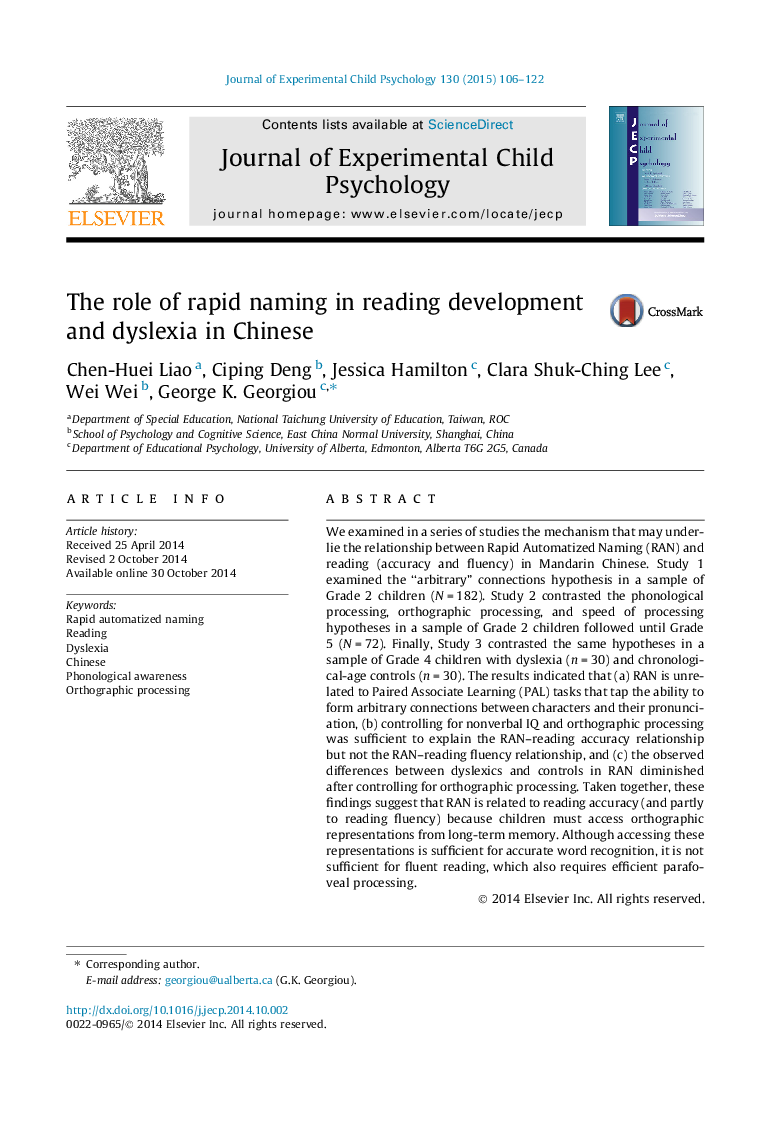| Article ID | Journal | Published Year | Pages | File Type |
|---|---|---|---|---|
| 918005 | Journal of Experimental Child Psychology | 2015 | 17 Pages |
•We examined the RAN-reading relationship in Chinese.•RAN was more strongly related to reading fluency than reading accuracy.•The “arbitrary” connections hypothesis was not supported by our findings.•The RAN deficits of Chinese dyslexic children were due to longer pause times.
We examined in a series of studies the mechanism that may underlie the relationship between Rapid Automatized Naming (RAN) and reading (accuracy and fluency) in Mandarin Chinese. Study 1 examined the “arbitrary” connections hypothesis in a sample of Grade 2 children (N = 182). Study 2 contrasted the phonological processing, orthographic processing, and speed of processing hypotheses in a sample of Grade 2 children followed until Grade 5 (N = 72). Finally, Study 3 contrasted the same hypotheses in a sample of Grade 4 children with dyslexia (n = 30) and chronological-age controls (n = 30). The results indicated that (a) RAN is unrelated to Paired Associate Learning (PAL) tasks that tap the ability to form arbitrary connections between characters and their pronunciation, (b) controlling for nonverbal IQ and orthographic processing was sufficient to explain the RAN–reading accuracy relationship but not the RAN–reading fluency relationship, and (c) the observed differences between dyslexics and controls in RAN diminished after controlling for orthographic processing. Taken together, these findings suggest that RAN is related to reading accuracy (and partly to reading fluency) because children must access orthographic representations from long-term memory. Although accessing these representations is sufficient for accurate word recognition, it is not sufficient for fluent reading, which also requires efficient parafoveal processing.
